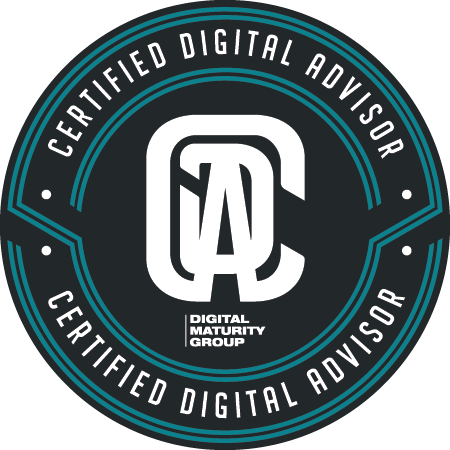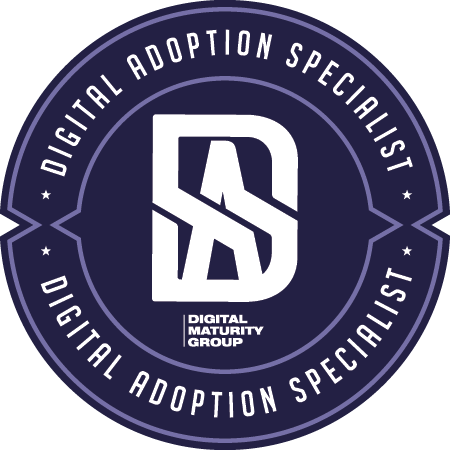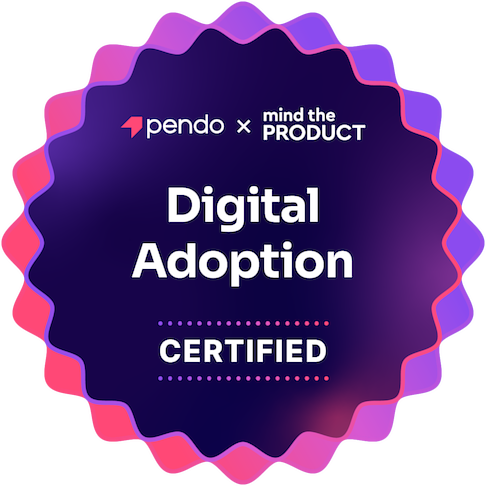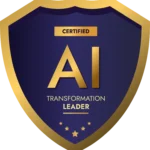In today’s digital era, organizations are constantly adopting new technologies to stay competitive and enhance their operations. However, the process of digital adoption comes with its fair share of challenges. In this article, we will explore some of the common challenges faced by businesses during the digital adoption journey and provide actionable strategies to overcome them.
Common Challenges in Digital Adoption Include:
Lack of Employee Engagement
One of the major challenges in digital adoption is the lack of employee engagement. When employees are not adequately involved in the digital transformation process, they may feel disconnected and resistant to change. To address this challenge, organizations should focus on effective communication, training, and involving employees in decision-making processes.
Resistance to Change
Change can be intimidating, and resistance is a natural response when implementing digital initiatives. Overcoming resistance requires a well-planned change management strategy that includes clear communication, addressing concerns, and involving employees in the decision-making process. Demonstrating the benefits of digital adoption and providing support throughout the transition can help mitigate resistance.
Insufficient Training and Support
Without proper training and support, employees may struggle to adapt to new digital tools and processes. Offering comprehensive training programs, resources, and ongoing support is crucial to ensure employees have the necessary skills and knowledge to embrace digital adoption successfully. Regular feedback and reinforcement can also help reinforce the learning process.
Legacy Systems Integration
Integrating new digital technologies with existing legacy systems can be complex and challenging. Legacy systems may lack compatibility, making data migration and system integration difficult. To overcome this challenge, organizations should carefully plan and strategize the integration process, considering factors like data integrity, security, and scalability.
Inadequate Data Security Measures
With the increasing reliance on digital tools, data security is a paramount concern. Organizations must implement robust security measures to protect sensitive information from cyber threats. This includes adopting encryption protocols, regular security audits, employee training on data privacy, and staying updated with the latest security practices and regulations.
Poor User Experience
A poor user experience can hinder digital adoption efforts. If digital tools are difficult to use, unintuitive, or lack essential functionalities, employees may resist using them. To address this challenge, organizations should prioritize user-centric design, conduct user testing, gather feedback, and continuously improve the user experience to enhance adoption rates.
Scalability Issues
Scaling digital adoption across an organization can pose challenges, especially in larger enterprises. It requires a well-defined strategy, infrastructure, and resource allocation. Organizations should develop scalable solutions, leverage cloud-based technologies, and plan for future growth to ensure successful digital adoption at scale.
Alignment with Business Objectives
Digital adoption should align with the organization’s overall business objectives and goals. Without proper alignment, digital initiatives may not deliver the expected outcomes. Organizations should have a clear vision, define measurable objectives, and regularly evaluate the alignment between digital initiatives and business goals to ensure success.
Limited Budget and Resources
Budgetary constraints and limited resources can impede digital adoption efforts. Organizations should prioritize investments, seek cost-effective solutions, explore partnerships, and leverage existing resources effectively. A well-planned budget and resource allocation strategy can help overcome this challenge and ensure sustainable digital adoption.
Ineffective Communication and Collaboration
Effective communication and collaboration are essential for successful digital adoption. Siloed communication channels and lack of collaboration can hinder the sharing of knowledge and impede the adoption process. Organizations should foster a culture of open communication, encourage collaboration across teams, and leverage digital tools that facilitate communication and knowledge sharing.
Compliance and Regulatory Concerns
Compliance and regulatory requirements can present challenges during digital adoption, particularly in highly regulated industries. Organizations should prioritize compliance, ensure data privacy, and stay updated with relevant regulations. Engaging legal and compliance teams early in the digital adoption process can help address potential concerns proactively.
Continuous Learning and Adaptation
Digital adoption is an ongoing process that requires continuous learning and adaptation. Organizations should foster a culture of continuous improvement, encourage learning opportunities, and promote innovation. Regularly assessing the digital landscape, identifying emerging technologies, and adapting strategies accordingly can help organizations stay ahead in their digital adoption journey.
Tracking and Measuring Progress
Measuring the progress of digital adoption is crucial to evaluate the effectiveness of initiatives and identify areas for improvement. Organizations should define key performance indicators (KPIs), leverage analytics tools, and regularly track and measure progress. This data-driven approach enables informed decision-making and helps optimize digital adoption strategies.
Cultural Transformation
Digital adoption often requires a cultural transformation within an organization. Shifting mindsets, breaking traditional hierarchies, and embracing a digital-first mindset can be challenging. Organizations should invest in change management, promote a culture of innovation, and empower employees to embrace digital transformation for successful cultural transformation.
Managing Stakeholder Expectations
Digital adoption involves various stakeholders, including employees, management, customers, and partners. Managing diverse expectations and gaining stakeholder buy-in is essential for smooth adoption. Regular communication, addressing concerns, and involving stakeholders in decision-making processes can help manage expectations and build support for digital initiatives.
Strategies to Overcome Digital Adoption Challenges
Here are 15 strategies to overcome digital adoption challenges:
- Foster a culture of open communication and employee engagement: Encourage open dialogue and create an environment where employees feel comfortable sharing their thoughts and concerns about digital adoption. This will help address any resistance or uncertainties they may have.
- Develop a comprehensive change management strategy to address resistance: Implement a structured approach to manage change, including identifying potential sources of resistance, creating a communication plan, and involving employees in the decision-making process.
- Provide adequate training and ongoing support for employees: Offer comprehensive training programs to ensure employees have the necessary skills and knowledge to use digital tools effectively. Provide ongoing support through help desks, user guides, and training resources.
- Plan and strategize legacy system integration carefully: When transitioning from legacy systems to new digital solutions, plan the integration process meticulously to minimize disruptions and ensure a smooth transition for employees.
- Implement robust data security measures to protect sensitive information: Prioritize data security by implementing encryption, access controls, and regular security audits. Train employees on data protection best practices and raise awareness about potential risks.
- Prioritize user-centric design and continuously improve the user experience: Focus on designing digital solutions that are intuitive, user-friendly, and address specific user needs. Continuously gather feedback and make iterative improvements based on user input.
- Develop scalable solutions and leverage cloud-based technologies: Consider adopting cloud-based technologies that offer scalability, flexibility, and easy accessibility. This allows for smoother digital adoption and reduces infrastructure constraints.
- Ensure alignment between digital initiatives and business objectives: Clearly define how digital initiatives support the organization’s overall goals and ensure that all stakeholders understand the benefits and purpose of digital adoption.
- Optimize budget and resource allocation for sustainable digital adoption: Allocate resources wisely to support digital adoption efforts. Consider investing in necessary infrastructure, training programs, and ongoing support to ensure sustainable implementation.
- Promote effective communication and collaboration across teams: Encourage cross-functional collaboration and communication to break down silos and foster a collaborative environment. This will facilitate knowledge sharing and increase the success of digital adoption efforts.
- Prioritize compliance and regulatory requirements: Ensure that digital solutions comply with relevant regulations and standards. Keep up to date with legal requirements and industry best practices to avoid any legal or compliance issues.
- Foster a culture of continuous learning and adaptation: Encourage employees to embrace a growth mindset and view digital adoption as an opportunity for personal and professional development. Provide learning resources and promote a culture of continuous learning and adaptation.
- Track and measure progress using relevant KPIs and analytics: Define key performance indicators (KPIs) that align with your digital adoption goals and regularly measure and analyze progress. This will help identify areas for improvement and make data-driven decisions.
- Invest in change management for successful cultural transformation: Allocate resources and support change management initiatives to drive successful cultural transformation. This may include training change champions, conducting workshops, and promoting a positive attitude towards change.
- Manage stakeholder expectations through regular communication and involvement: Keep stakeholders informed about the progress of digital adoption efforts through regular communication channels. Involve them in the decision-making process and address their concerns to ensure their buy-in and support.
By implementing these strategies, organizations can overcome digital adoption challenges and successfully navigate the transition to a more digital-driven environment.
Conclusion
Digital adoption brings numerous benefits to organizations, but it also comes with its share of challenges. By understanding and proactively addressing these challenges, businesses can navigate the digital landscape successfully. By fostering a culture of innovation, providing adequate support and training, and aligning digital initiatives with business objectives, organizations can overcome common obstacles and achieve sustainable digital adoption.
FAQs
- How long does the digital adoption process take? The duration of the digital adoption process varies depending on the organization’s size, complexity, and goals. It can range from several months to a few years.
- What role does employee engagement play in digital adoption? Employee engagement is crucial for successful digital adoption. Engaged employees are more likely to embrace new technologies and contribute to the organization’s digital transformation efforts.
- How can organizations ensure data security during digital adoption? Organizations can ensure data security by implementing robust security measures, providing employee training on data privacy, and regularly updating their security practices to stay ahead of evolving threats.
- What is the significance of aligning digital adoption with business objectives? Aligning digital adoption with business objectives ensures that digital initiatives contribute to the organization’s overall strategic goals and deliver tangible value.
- How can organizations measure the success of digital adoption? Organizations can measure the success of digital adoption by defining relevant KPIs, tracking and analyzing data, and evaluating the impact of digital initiatives on key business metrics.
Book a Wingman Today for a Free Digital Adoption Plan Consultation
There is no doubt that technology is critical to your business today. Organizations need to adopt a digital-minded strategy to be able to thrive. But it’s essential that technology is deployed correctly. And more specifically, you shouldn’t start without a solid digital adoption plan in hand.
If you feel that your current technology infrastructure might be holding your organization back from reaching your goals and objectives, it may be time to invest in a digital adoption plan, like what Wingman can provide you. Contact us today and we can show you how to make your technology work harder and smarter for you by creating your own unique digital adoption plan.
PS: Secure your $15,000 Canada Digital Adoption Grant Today
Did you know you can get up to $15,000 grant towards your digital adoption plan…and an interest free loan up to $100,000 and a hiring subsidy to implement it? Ask us about the Canada Digital Adoption Plan and Boost Your Business Technology Grant. Wingman is an approved CDAP Digital Advisor partner of Canada’s Innovation, Science and Economic Development Canada. Only an approved CDAP Digital Advisor can help you access the CDAP grant to have your digital adoption plan get approved through the CDAP program.
Book a Wingman today to discuss how we can help.






